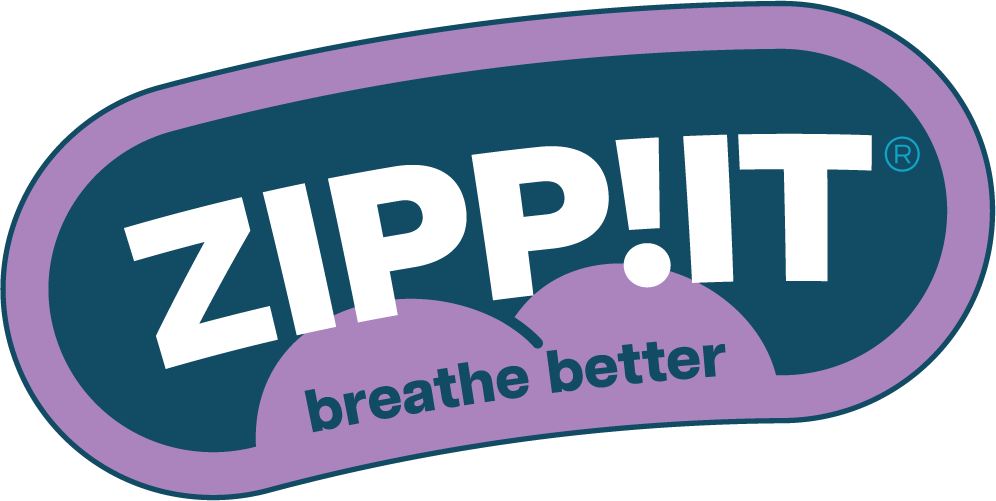Suffering from hay fever? Nasal strips offer relief
Nasal strips are a simple yet effective solution for people struggling with troublesome hay fever symptoms.
When pollen season begins, millions of people in the Netherlands experience a runny nose, sneezing, and itchy eyes. A blocked nose, in particular, can be extremely bothersome during daily activities and at night when you're trying to sleep. What many people don’t realize is that nasal strips can be an accessible way to relieve breathing difficulties caused by hay fever.
These small, discreet tools are applied to your nose to widen the nasal passages. This improves airflow and makes breathing much easier. In this article, we’ll explore how nasal strips can specifically help with hay fever symptoms, examine different types of strips, and learn how to use them most effectively. We'll also look at what science says about this simple but often underrated solution for seasonal allergies.

What Are Nasal Strips and How Do They Relieve Hay Fever Symptoms?
Nasal strips are small, adhesive bands that you place on the outside of your nose. They’re made from flexible, spring-like material that gently pulls open the sides of your nose. This simple mechanism has a surprising effect: it widens your nasal passages, allowing you to breathe much more easily.
But how does this help with hay fever? When you suffer from hay fever, the mucous membranes in your nose become inflamed due to airborne pollen. This inflammation causes swelling, narrowing your airways and blocking your nose. Nasal strips counteract this narrowing.
By physically keeping your nasal passages open, nasal strips offer several benefits:
-
Improved airflow through the nose, making breathing easier
-
Reduced breathing resistance, requiring less effort
-
Less reliance on mouth breathing (which can dry out your throat)
-
Better air filtration, since nasal breathing filters pollen more effectively
The Benefits of Nasal Strips for Allergies and Breathing Problems
Sniffit Nasal strips offer a variety of benefits that are often overlooked by those with seasonal allergies.
One major advantage is their immediate effect — as soon as the strip is properly applied, you’ll notice a difference in your breathing. This contrasts with many medications, which need time to take effect.
Improved nasal breathing has wide-ranging benefits for hay fever sufferers:
-
Better sleep quality: Many hay fever patients experience worse symptoms at night, leading to poor sleep. Nasal strips can improve nighttime breathing, reducing interruptions and promoting deeper, more restful sleep.
-
Enhanced athletic performance: During physical activity, good oxygen intake is crucial. Nasal strips allow allergy sufferers to breathe more effectively during exercise or sports.
-
Reduced mouth breathing: A blocked nose leads to mouth breathing, which can cause a dry throat, increased risk of infection, and even long-term dental issues. Nasal strips help prevent this.
-
No medicinal side effects: Unlike many hay fever medications, which may cause drowsiness or dry mouth, nasal strips are a natural solution without these side effects.
Scientific studies show that nasal strips can reduce nasal airway resistance by up to 30%. That’s a significant benefit for allergy sufferers! Clinical studies also show that better nasal breathing can lead to lower heart rate and blood pressure during exercise.
It's important to have realistic expectations: nasal strips do not treat the underlying allergic reaction. They provide symptomatic relief by mechanically opening the airways and should be seen as part of a broader allergy management strategy.
Scientific Evidence: Are Nasal Strips Effective for Hay Fever?
The effectiveness of nasal strips for hay fever has been studied in several scientific investigations. Looking at the available research provides a nuanced picture of what to expect.
Various clinical studies show that nasal strips significantly reduce nasal airflow resistance. A study published in the Journal of Allergy and Clinical Immunology found that subjects with allergic rhinitis (including hay fever) experienced an average 27% improvement in nasal airflow when using nasal strips. This was associated with reports of increased comfort and less nasal congestion.
Scientific support for their effectiveness is based on several mechanisms:
-
Mechanical dilation of nasal passages: Nasal strips pull the nostrils outward, increasing the cross-sectional area of the nasal passage. This is critical because airway resistance is inversely proportional to the fourth power of the airway radius — a small increase can result in a large drop in resistance.
-
Stabilization of the lateral nasal wall: During inhalation, the nasal wall can collapse inward. Nasal strips stiffen the nose’s outer wall, preventing this collapse.
-
Indirect reduction of inflammation: While nasal strips don’t affect the allergic reaction itself, better ventilation may reduce allergen buildup in the nasal cavity.
However, it’s important to understand the limitations:
-
Nasal strips don’t treat the underlying allergic reaction
-
Effectiveness varies per person, depending on nasal anatomy
-
They don’t help with other hay fever symptoms like itchy eyes or sneezing
Professor Dr. Johan Vermeiren, ENT specialist and allergy expert, says:
“Nasal strips can be a valuable addition to conventional hay fever treatments. They are especially effective for patients whose main issue is nasal congestion. We see the best results in patients who combine nasal strips with other treatments such as antihistamines or nasal corticosteroids.”
Practical Tips: How to Use Nasal Strips Effectively for Hay Fever
To get the most out of nasal strips during hay fever season, proper application is essential.
Steps for correct application:
-
Clean the skin thoroughly: Start with a clean, dry nose. Remove any skin oils or makeup with a gentle cleanser.
-
Identify the right position: Place the strip over the widest part of your nostrils, about halfway between the bridge and the tip of your nose.
-
Remove the backing: Gently peel off the protective layer from the adhesive side.
-
Apply the strip: First press down the center of the strip onto the bridge of your nose, then smooth out the ends over the nostrils.
-
Press firmly: Hold the strip in place for a few seconds to ensure good adhesion.
Tips for effective hay fever relief:
-
Start early: Apply nasal strips before symptoms become severe, preferably in the morning after waking up.
-
Use during peak pollen times: Monitor pollen forecasts and use nasal strips on high-pollen days.
-
Night use: Consider special nighttime strips designed to stay on while you sleep.
- Replace regularly: Follow manufacturer guidelines — typically every 8–12 hours or when the adhesive weakens.

Choosing the Best Nasal Strips: What to Look For
When choosing nasal strips, several factors matter. A well-chosen strip can make a big difference in effectiveness.
Key considerations:
-
Spring strength: Choose strips with a balance of flexibility and firmness. Too stiff can be uncomfortable, too soft may not be effective.
-
Hypoallergenic properties: Important for those with sensitive skin or multiple allergies. Look for strips labeled “hypoallergenic.”
-
Adhesive quality: The glue should be strong enough to hold the strip in place, but gentle enough to avoid skin irritation upon removal.
Nasal strips for different needs:
-
Daily use: Standard-strength strips, often in neutral or clear designs.
-
Night use: Extra-strong strips that stay comfortable and secure overnight.
-
Sports use: Water-resistant strips with stronger adhesive for use during workouts.
- Discreet options: Nearly invisible strips for professional or social settings.
Conclusion: Nasal Strips as Part of Your Hay Fever Strategy
Nasal strips offer a simple yet effective way to relieve one of hay fever’s most bothersome symptoms: a blocked nose. By mechanically keeping your nasal passages open, they improve airflow, making it easier to breathe during pollen season.
Their advantages are versatile: immediate results, no side effects, compatibility with other treatments, and suitability for various situations. This flexibility makes them a valuable addition to your hay fever toolkit.
For the best results, apply nasal strips correctly, choose the right type for your needs, and integrate them into a broader allergy management approach. Combine their use with medication, environmental control, and smart timing of outdoor activities.
Never used nasal strips for hay fever before? It’s worth a try! Start with a small pack from a reputable brand and see how they help during your most troublesome moments — like sleeping or outdoor activities.
For persistent or severe hay fever symptoms, always consult a doctor or allergist for personalized advice. While nasal strips can be a helpful tool, professional guidance remains key to a treatment plan tailored to your specific situation.


